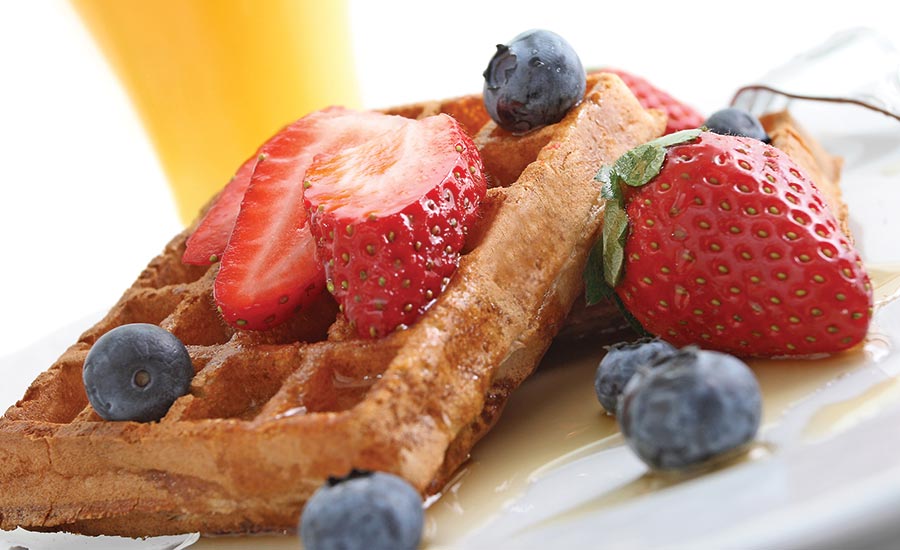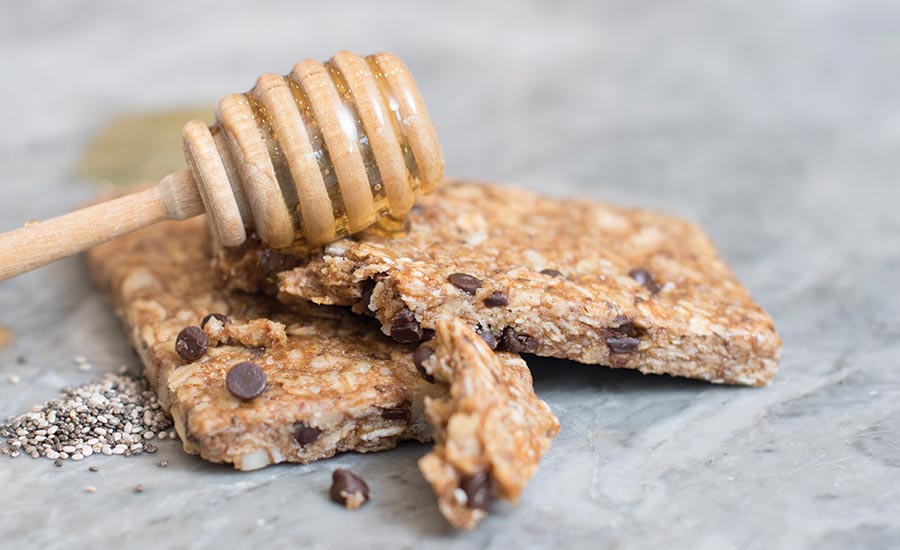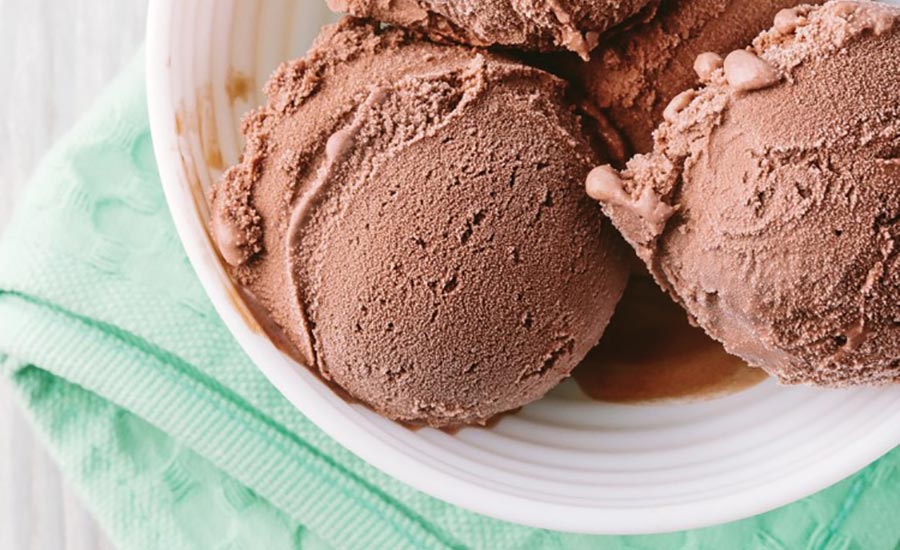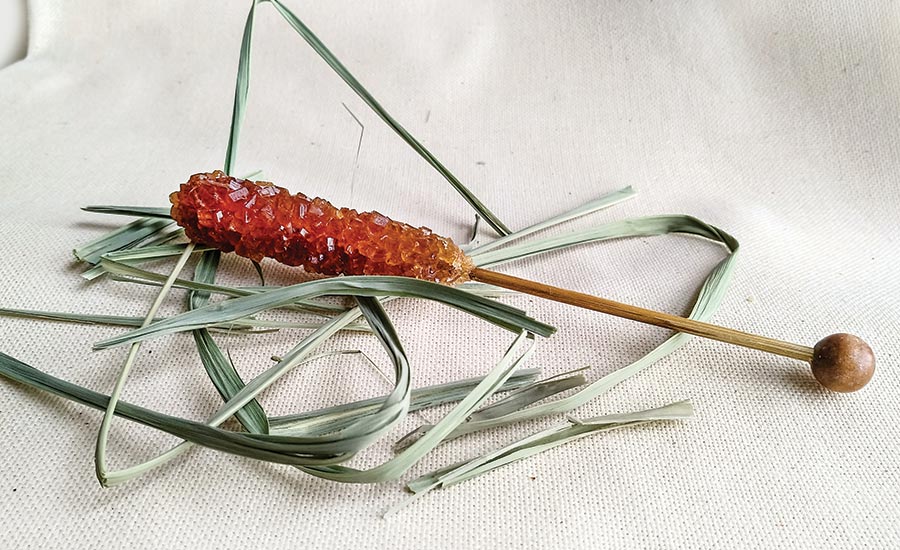The 2019 International Food Information Council (IFIC) Food and Health Survey reported that limiting or reducing sugar in the diet, along with eating more fruits and vegetables, topped the dietary changes consumers were making. Of those surveyed that year, 38% said they followed some sort of special diet. Of that number, 80% declared some intention to limit or avoid sugars in the diet.
What does the sweetener landscape look like as we enter the third decade of the 21st century? Two things are certain: Number one, consumers will not lose their taste for sweet things. Because of this, sucrose — table sugar — will remain the benchmark of sweetness and keep its position as the most popular means of sweetening most foods and beverages. Number two, consumers will continue to declare their desire to cut down on it.
How to explain this dichotomy? While consumption of sugar has diminished each year for the past several years, the average American still is consuming more than 126g of it – more than a quarter of a pound – every day, according to the Diabetes Council. This is a clear indication that both sugar and its replacers are here to stay and are of equally great value to food and beverage developers and manufacturers.

Barley, wheat, oat, and rice malt sweeteners have been especially favored for their natural goodness, versatility,, and toasty sweet flavor notes. PHOTO COURTESY OF: Briess Malt and Ingredients Co. (www.briess.com)
While marketers take a prudent approach to drawing attention to added sugars, R&D teams and research chefs focus on flavor and functionality of the sweetening matrix in new product development efforts. Among sugar-reduction and sugar-replacement strategies, sweetener blends will continue to expand and become more nuanced. Akin to artists who create colors on a palette by dabbing bits of paint together until just the right hue is achieved, product developers are increasingly blending sweeteners to create customized results for their customers.
“When we set out to create a sugar replacer, we knew we had to do more than just compete for sweetness,” says Steven Kingsley, co-CEO of HIP Gastroplex, parent company of Einstein Brands Inc. sugar-free marshmallows and chocolates. Chocolates and marshmallows are two of the most difficult items to craft successfully without sugar, as it provides not only a large part of the familiar flavor of these items but also volume, texture, and other organoleptic characteristics consumers expect.
To achieve this, Kingsley developed a sweetener he named “Sugarlesse.” The blend is composed of four different components, all of them naturally occurring – thus GRAS – and produced by either fermentation or extraction from plant sources. Included is a debittered form of stevia extract to tweak the final sweetness level to equal that of sucrose.
“We comprised the blend with an eye on multiple ingredients that would each bring a specific benefit to a sweetener system and work in concert to create a whole that would be better than just one or two ingredients, as is more common when replacing sugar,” explains Kingsley. “We needed to include a sweetener that would allow us to develop mass and texture – especially critical for the marshmallows – then built on one of the ingredients used for primary flavor notes. Then, we brought in an ingredient for flavor augmentation and one for color development. This way, we could more precisely balance browning and caramelization, tenderizing, viscosity control, moisture control, preservation, and shelf life extension. All these parameters were crucial in addition to sweetening.”
Healthy Honey
Honeys with darker color and more water tend to have higher antioxidant properties. The most abundant antioxidant of those naturally occurring in honey is pinocembrin. It is a natural flavonoid found in many plants. Studies identify pinocembrin as a biologically active constituent of honey with anti-inflammatory and antimicrobial properties, among other benefits.
Kingsley notes that his challenge in crafting the perfect combination of all of these functional properties was compounded by wanting to utilize only commercially available ingredients. “We needed to create a product that was attractive to home, professional, and industry users. It needed to provide the same functionality as sucrose and in the same amounts; it needed to sweeten, cook, and bake like sugar; no aftertaste was a must; and it also needed to be healthy.”
As far as health benefits go, Sugarlesse delivers 25% fewer calories than sucrose; it does not cause g.i. issues, as do some sugar alcohols; and it is perfectly suitable for consumers with diabetes, boasting a Glycemic Index of only 42. Sugarlesse also is vegan and certified kosher. In addition to the marshmallows and chocolates, the Einstein Brands team is currently working on developing other products using its advanced in-house sweetener system.
Keeping It Real
BeBOLD Energy Bars were launched in November 2019 by siblings Stacy Madison and David Lowe, the same team that founded Stacy’s Pita Chips. The peanut butter- or almond butter-based line is sweetened with a blend of wildflower honey, dark maple syrup, and cane sugar. Sweeteners don’t get more natural than maple and honey.
There are more than 300 different floral sources for honey in the US, as found on honeylocator.com. Honey colors can range from water white to dark amber, with flavor intensity increasing with opacity. With options of dried, crystallized honeys available, product developers have even greater leeway in using honey as a sweetener option in their formulations.

While high-intensity sweetener blends are common, creative developers are marrying distinctly flavored nutritive sweeteners, such as dark maple syrup and wildflower honey, into captivating blends. PHOTO COURTESY OF: BeBOLD, LLC (www.bebold.com)
“Honey and maple syrup provide the best binding and fresh, sweet taste without overpowering the bar,” shares Maryn Robinson, COO and “Chief Bar Maker” for BeBOLD Foods, LLC. The company uses only organic wildflower honey for its flavor and mixed floral notes. She explains that these qualities are only available in organic wildflower honey and not found in a single-sourced alternative. Meanwhile, the robust flavor of dark maple syrup lends distinct flavor notes to BeBOLD bars.
“The snack bar consumer tends to purchase what they believe is providing their desired benefit, be it ‘protein’, ‘keto’ or some other primary attribute,” adds Robinson. “BeBOLD serves the consumer seeking ingredients from nature, which our sweetening blend derived ‘from bees and trees’ accomplishes.” One hurdle Robinson says the company hopes to overcome as it projects $3M in sales in 2020 is its choice to locate the line in refrigerated sections to optimize quality and freshness.
The Sappy Side
Historically, it’s documented that Native Americans tapped trees under pressure in the spring for their sap centuries ago. Although no longer collected in hollowed-out logs or iron pots, maple syrup is still produced in a way that preserves the tree for hundreds of years, making the process one of the most environmentally friendly among sweetener production.
Today, tubing flows from the trees to “sugar shacks,” buildings where the sap is boiled down to a more concentrated syrup. Sugar maple trees are delicate, dependent on environmental conditions that only certain climates can provide. The US produced 4.2 million gallons of maple syrup in 2019, with Vermont supplying almost half the total volume. It takes 40 liters of sap to produce 1 liter of syrup.
The grading of maple syrup was updated in 2015, replacing the previous color grading system with one based on spectrophotometric analysis. The new system refers to all maple syrup as Grade A, with differentiation identified by color and flavor descriptions, ranging from “Golden Color/Delicate Taste” to “Very Dark Color/Strong Taste”. All maple syrups must meet a brix range between 66.0 - 68.9. BeBOLD calls out the maple syrup it uses in its energy bars as “dark maple syrup,” which, under this new system, is more specifically defined as, “Grade A Dark Color/Robust Taste.”

The game-changing sweetener allulose can perform as a 1:1 drop-in sucrose replacer in many formulations, delivering similar functionality with only 5% of the calories. PHOTO COURTESY OF: Tate & Lyle, Inc. (www.tateandlyle.com)
As Slow As
Molasses has been generating enhanced interest among manufacturers for its array of flavor and color options. It also is favored by consumers who prefer sweeteners that resonate with them as being nutritive and natural. While by definition, molasses is the thick brown syrup separated during the second boiling of sugar cane in sucrose manufacturing, it also can define any syrup derived from boiling down and reducing sweet vegetable or fruit juice.
The term “molasses” for most conjures up images of a syrup with intense flavor but relatively low sweetness and even some bitterness. Traditionally limited to barbeque sauces or spice cakes, cookies, and gingerbread for home baking, molasses options for industry present many more choices than the dark and robust blackstrap or even a smoother “fancy” molasses.
Sensory specialists with molasses companies specialize in custom blending to create molasses applications that are more desirable with lighter, more golden colors and honeylike notes. These sweeter cane molasses options have a typical sugar profile of between 68-75%, compared to more robust molasses with sugar profiles in the 54-68% range.

The traditional southern favorite, sorghum syrup, is the old “new kid” on the sweetener block with high interest based on its rich flavor and nutritional value. PHOTO COURTESY OF: getty images
Research chefs and R&D teams are now looking beyond molasses as a static “one trick” ingredient type. Manufacturers of molasses offer a variety of flavor profiles and color variations, determined by such factors as amount of sugar, method of extraction, and age of the plant the molasses is derived from. Refinery syrups are derived from the more bitter molasses left after the third boiling for applications desiring some molasses notes, color, and functionality but with more affordability. Naturally occurring invert sugars in refinery syrups enhance their appeal for increasing shelf stability in baked goods.
Custom molasses blending can optimize desired outcomes for color, flavor, and masking, as well as meet targeted objectives for nutrient retention. A small amount of molasses can effectively enhance flavor, as well as mask some bitter and metallic notes, to optimize consumer acceptance of products preferentially sweetened with monk fruit or stevia.
Pomegranate molasses, although typically the concentrated fruit juice without added sugar, is sometimes sweetened with sugar and balanced with lemon or vinegar. Its market may see more widespread interest and growth due to increasing curiosity about Turkish and Levantine cuisines. Whole Foods predicts “Foods from West Africa” will be one of the top 10 trends in 2020. As chefs explore how to incorporate more global ingredients into mainstream and recognizable recipes, the tart, yet natural syrups from superfruits such as pomegranate are on the radar.
Treacle Down Theory
Molasses is referred to as “black treacle” or even just “treacle” in the UK. Treacle is a blend of refinery syrup and molasses and can range in color from a light gold to nearly black, with flavor intensity increasing with color. Black treacle is most equivalent to blackstrap molasses and can have some bitter or even acidic notes. In recipes calling for a lighter colored and more mild-flavored treacle, conventional retail-based US molasses options might not be a desirable replacement, unless blended with a milder sucrose syrup, such as a golden syrup, with a similar brix. Although traditional blackstrap molasses is touted for its micronutrient benefits, including iron, calcium, manganese, and potassium, lighter treacles might be a better choice for bakers seeking to mitigate bitter notes in whole-grain breads and other baked goods.
Pomegranate molasses is a principal ingredient in muhammara, a spicy Aleppo pepper and ground walnut dip, spread, or sauce from Syria. In western Turkey, muhammara is referred to as acuka. Pomegranate molasses can be blended with maple syrup, sugar syrup, honey, or molasses to create custom sweetening solutions for barbeque sauces, dessert toppings, and pancake syrups, as well as binding syrups for snack and energy bars. Most bottled pomegranate molasses options available in the retail market today appear to be imported.
Not to be confused with pomegranate molasses, grenadine is a thinner and always sweetened pomegranate syrup. Pomegranate is recognized by consumers as a superfruit, and pomegranate syrups can ride the new interest in health and wellness with beverage applications in tea and lemonade, as well as its more traditional use in alcoholic mainstays such as a Tequila Sunrise.
Sorghum syrup could be called molasses’ Texas cousin. Although popular throughout much of the South, sorghum syrup has always been a staple sweetener in the great state, one of the leading producers of the crop in the US. As with molasses, sorghum syrup is available in a range of colors. Standard sorghum syrup is lighter than molasses and its flavor is somewhere between that of dark corn syrup and light molasses.
Food and beverage manufacturers are taking note of sorghum’s versatility as a natural sweetener with healthful attributes. It can provide subtle background notes that enhance the flavor of baked goods as well as savory items, especially sauces. Confectioners, too, are taking greater interest in the sweetener.
Reduction Redux
Some manufacturers have lowered sugar content by means other than introducing high-intensity sweeteners. Park City, Utah-based Kodiak Cakes LLC produces a line of fruit syrups, including Mountain Berry (blend of marionberry and red raspberry), Apricot, and Raspberry flavors, that are positioned as having “less sugar than maple syrup.” Made from pure fruit purees and cane sugar, each “super fruit syrup” includes xanthan gum for mouthfeel and for sugar reduction. Each syrup contains 13g of sugar per 2 tablespoons (30 ml) serving, compared to 26g of sugar per the same size serving of pure maple syrup.
Beverages continue to be a central product in sugar-reduction efforts, with more consumers shifting away from fully caloric drinks in favor of waters of all types. Whether flavor-infused, function-enhanced, “sparkling,” “bubbly,” or plain old-fashioned carbonated, low-calorie and no-calorie options tempt the more health-conscious away from traditional calorically dense sodas.

Beverage makers can take advantage of strongly flavored natural sweeteners, such as maple, by keeping a light for a pleasurably sweet hint of the source. PHOTO COURTESY OF: Drink Maple, Inc./Meredith Hanson (www.drinksimple.com)
The non-herbal tea category benefits from being naturally rich in antioxidants and polyphenolic compounds. These compounds boast positive effects on health, including reducing inflammation and being antiangiogenic. A key driver is how natural the beverage ingredients – including the sweetener – are perceived to be.
Rebaudioside-M, 200-300 times sweeter than sugar, has been proven in consumer testing to have less bitterness and a “cleaner taste” than other available forms of stevia, including any forms of reb-A, -B, or -D. Reb-M is noted to have a taste “closest to sugar” of any of the stevia alternatives. Although Reb-M is still generally a more expensive option, proprietary technology and unique blending capabilities that combine a variety of steviol glycosides work to optimize desired sweetness and meet targeted cost objectives.
High-intensity sweetener options for the retail consumer are on the rise, with an increasing number of companies offering pure allulose or allulose-blended sweeteners in dry or liquid form. Recognized as 70% as sweet as sugar, allulose has appeal in manufacturing for its sugar-like ability to provide such attributes as browning and bulking. Allulose works well as a sugar replacement in many categories, including yogurt and frozen dairy-based confections, beverages, baked goods, jams and jellies, and puddings. Although the FDA has delayed the enforcement of mandated labeling for “added sugars” until July 1, 2020, heightened interest in allulose is likely to continue, given its exemption from consideration as an added sugar.
The FDA defined “added sugars” in the Nutrition Facts label final rule (81 FR 33742 at 33980) and issued updated guidance in December 2019. All nutritive sugars and syrups, regardless of their relative sweetening profile, are included. Sugars derived from the hydrolysis of complex carbohydrates, such as grain starches from oats and rice used to produce plant-based beverages, are also included. Hydrolyzed starch-based maltodextrins are also recognized as added sugar.
Polyols like erythritol add sweetness, and soluble prebiotic fiber ingredients such as chicory root fiber or soluble corn fiber add the bulk necessary to appeal to consumers seeking high-intensity sweetener benefits without compromising taste and texture. For retail, this appeal includes a sweetener option with the convenience of being an equal replacement for sugar in beverages and baking.
HighKey, which produces a line of mini cookies, granola products, and baking mixes, developed a proprietary blend of erythritol, monk fruit extract, and stevia extract to sweeten all its lines. Positioned as a natural sugar alternative blend with 90% fewer calories than sugar, it is also available at retail in 1-lb. pouches as a 2:1 replacement for sugar. The company also launched a blend with allulose that is a 1:1 replacement for granulated sugar and has 90% fewer calories than sugar.






